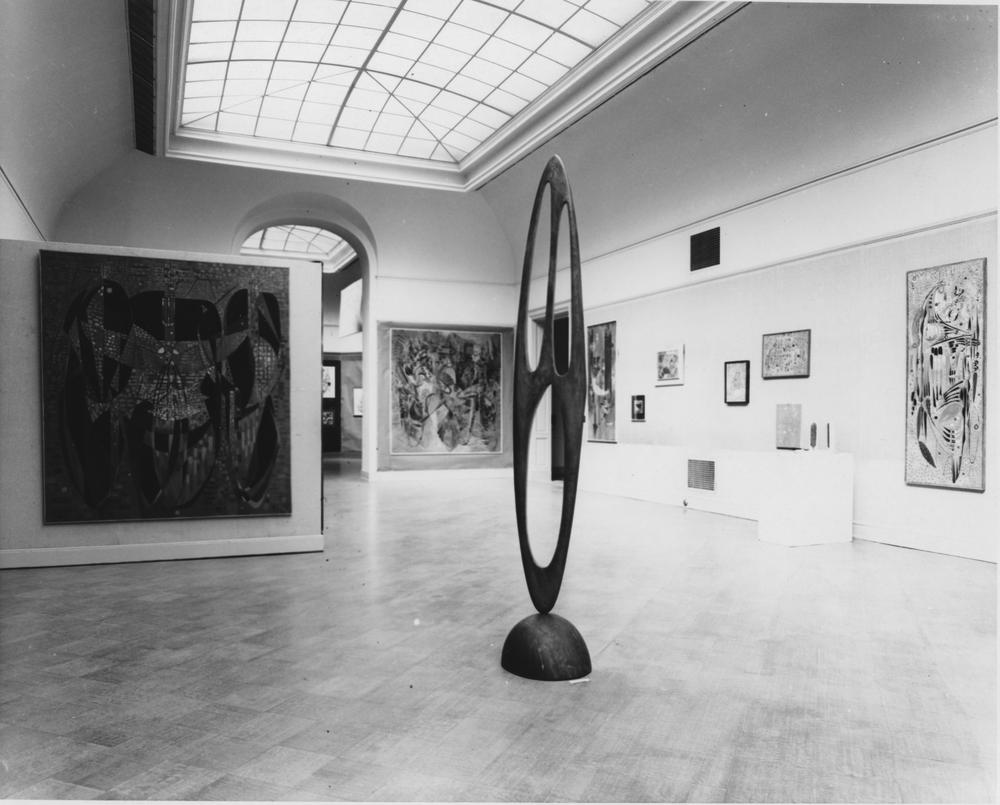Lee Mullican. Surrealism for the New World
At the urging of his army friend Jack Stauffacher, Lee Mullican moved to San Francisco in 1947 and met surrealist artists Gordon Onslow Ford and Wolfgang Paalen. The two had just come from Mexico City, where they had been living to escape the war in Europe. Mullican had come across Paalen’s art journal DYN during the war and was fascinated by its images of Native American art. After meeting in Northern California, Mullican studied Paalen’s collection of Pacific Northwest and pre-Columbian indigenous objects and the artworks in Onslow Ford’s studio by European surrealists like Max Ernst and Paul Klee.1 These influences majorly shaped Mullican’s stylistic and theoretical development during a period when he felt himself “searching, fighting for a refinement of work and ideas.”2 Together, Paalen, Onslow Ford, and Mullican formed the Dynaton—a short-lived but significant collective that culminated in a groundbreaking group exhibition called Dynaton at the San Francisco Museum of Modern Art in 1951. During a period of postwar optimism, the Dynaton shared a philosophical approach to artmaking as a mode of boundless exploration; like scientific inquiry, art could open new frontiers. The artists used approaches like automatism, or the practice of creating art by tapping into the unconscious, to access realms of thought uninhibited by the rational mind.
Lee Mullican, oral history interview with Paul Karlstrom for the Archives of American Art, Smithsonian Institution, May 22, 1992–March 4, 1993, transcript available at aaa.si.edu/collections/interviews/oral-history-interview-lee-mullican-12846. ↩︎
Mullican, “Thoughts on the Dynaton,” in DYNATION Re-Viewed (San Francisco: Gallery Paule Anglim, 1977), 4. ↩︎
